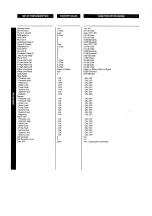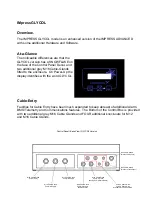
INSTALLATION
Do not attempt to start the pump even to check the direction of rotation until
the system has been filled with water and both the pump and the system
have been primed/vented.
All electrical connections should be carried out by a qualified and authorised
electrician in accordance with the latest issue of the I.E.E. regulations.
Do not remove motor terminal box covers, electrical cables or any other
electrical protective covering without first ensuring that the electrical supply
is suitably isolated and cannot be switched on.
Do not attempt to supply electricity to the unit without ensuring that all
electrical fittings, cables and enclosures are intact and suitably electrically
isolated from human touch during operation.
Electrical motors will have hot external surfaces during operation and care
must be taken to ensure that persons cannot come into contact with the
surfaces of the electric motor.
LOCATION
1. The unit should be sited in a dry, well ventilated but frost-free position where it will
not be subjected to extremes of temperature.
2. The environment should be non-aggressive and the atmosphere non-explosive.
3. Ensure that there is sufficient clearance around the unit to allow maintenance
operations to take place without obstruction
4. To enable maintenance and service of the unit to be carried out satisfactorily the
area should have adequate lighting for this work to be carried out safely.
5. The pipe work installation of the unit should be in accordance with local water
authority regulations.
FOUNDATION
The pressurisation unit should be installed on a concrete base, which is both
horizontal and flat to avoid distortion of the base plate.
Please allow a minimum clearance of 500mm above the unit for servicing float valve
and tank, and 750mm in front for servicing pumps and controls).
PRESSURE VESSEL(S)
On heating systems it is vitally important that the expansion vessel(s) has
more than sufficient capacity for the expansion of the liquid in the system. It
is
better
to
oversize
rather
than
undersize
for safety reasons.
It
is equally
important
to
have
the
correct
pre-charge
pressure
in
the
expansion
vessel(s) set in
accordance
with
the
manufacturers
instructions
and
the
requirements
of
the system.





































